How to Add Fermented Foods to Every Meal
Let me show you some very simple ways how easy it is to add gut-friendly, probiotic, fermented foods to every meal of your day.
These days, everyone is talking about probiotics, gut health, and fermented foods.
But how can you increase them and take care of your microbiome?
In this article, I’ll show you how easy it is to include fermented foods in every meal of your day!
Why add fermented foods?
Humans have a long relationship with fermented foods. Not just our grandparents but our ancestors knew that you could preserve food by fermenting it.
During fermentation, friendly bacteria are out-crowding “bad bacteria” — those that spoil your food.
While those beneficial bacteria not only preserve your food, they are also excellent for gut health. Therefore, it is a great idea to add gut-friendly bacteria to your daily diet.
Adding beneficial gut bacteria has many health benefits, such as preventing and treating conditions like:
- Obesity
- Diabetes
- Heart disease
- Inflammation associated with autoimmune diseases
Furthermore, there is a strong connection between your gut and your brain. In other words, improving the health of your gut can also improve your brain health (think mood, memory, etc.).
How to add gut-friendly bacteria
There are many good supplements on the market that add probiotics. I am not a health professional but under certain circumstances, it may be a good idea to take probiotics in pill form.
However, I prefer to add my gut-friendly bacteria to food. By including a variety of fermented foods, I am also getting a broad variety of probiotics.
Below, I will show you some easy ways you can add fermented foods to your diet throughout the day.
1. Apple Cider Vinegar
This is an easy and inexpensive one. But make sure that you are using RAW, UNPASTEURIZED apple cider vinegar if you are looking for gut-friendly bacteria.
Even though pasteurized apple cider vinegar is delicious and a good product, pasteurization (heat) has killed the live bacteria.
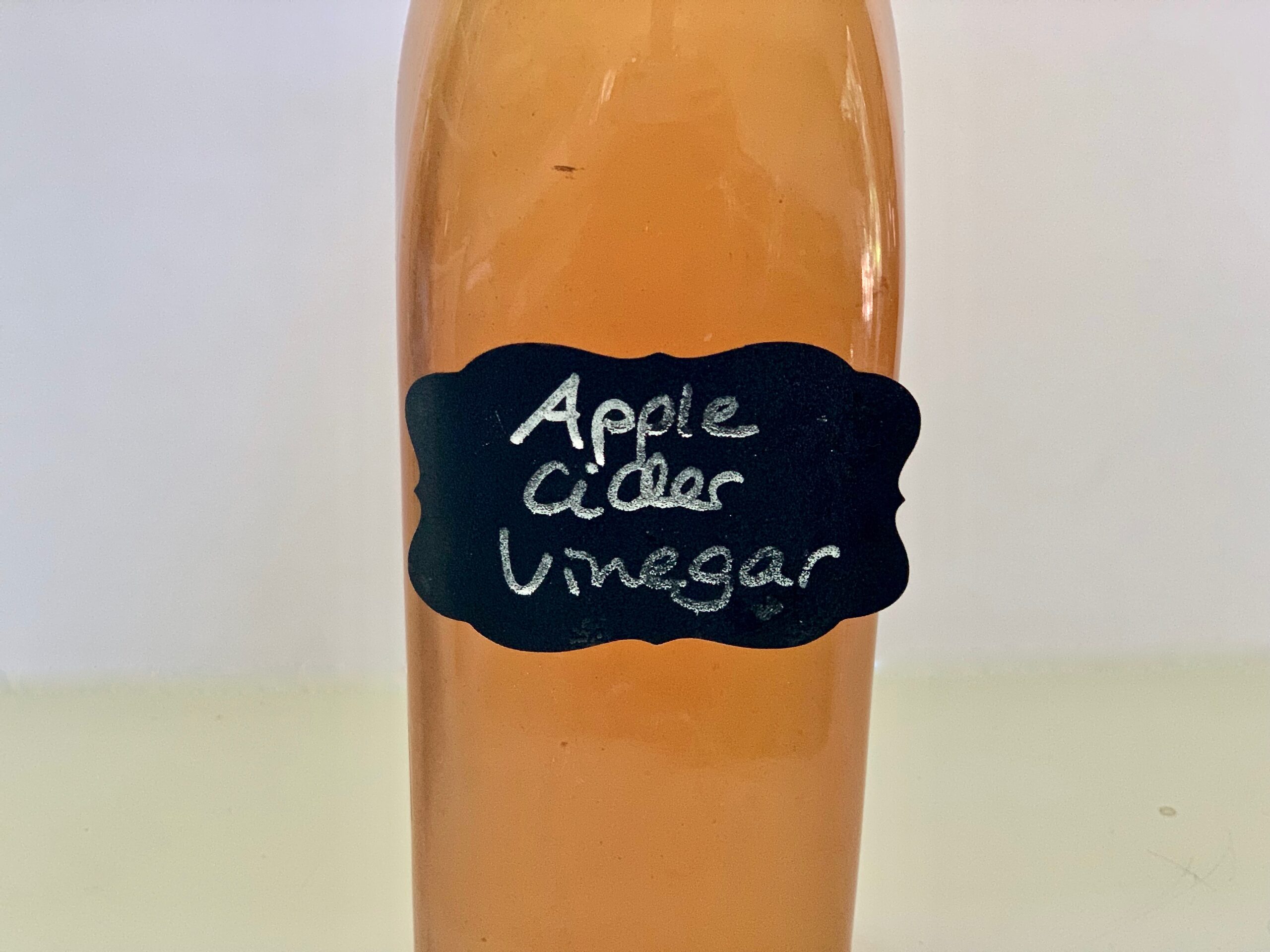
I am fortunate to be able to buy my apple cider vinegar in bulk. However, it’s surprisingly easy to make your own from apple cores and peels!
• You can start your day by adding 2 TBSP of ACV to a glass of water with some honey, maple syrup, or stevia as optional sweetener. Dr. Jarvis recommended drinking ACV and honey before every meal to lose weight (source). Whatever the reason, this apple cider vinegar drink is a great pick-me-up!
• Also, adding apple cider vinegar to your salad dressings adds good bacteria to your salads. Simply replace your other vinegar with ACV. Again, you can add a dash of sweetener, such as honey, maple syrup, or stevia.
2. Yogurt
Most of us associate yogurt with lactobacillus bacteria. Those are very beneficial for gut health!
However, the challenge with store-bought yogurt is that it is often laden with sugar and additives. Also, we don’t know where that yogurt has been and how many LIVE cultures are still in the yogurt.
For that reason, I have been making my own for years! I always say that it is ridiculously simple! Check out my recipe here. Making your own allows you to customize the flavor (and level of sourness) as well as add sweeteners or fruit to your liking.
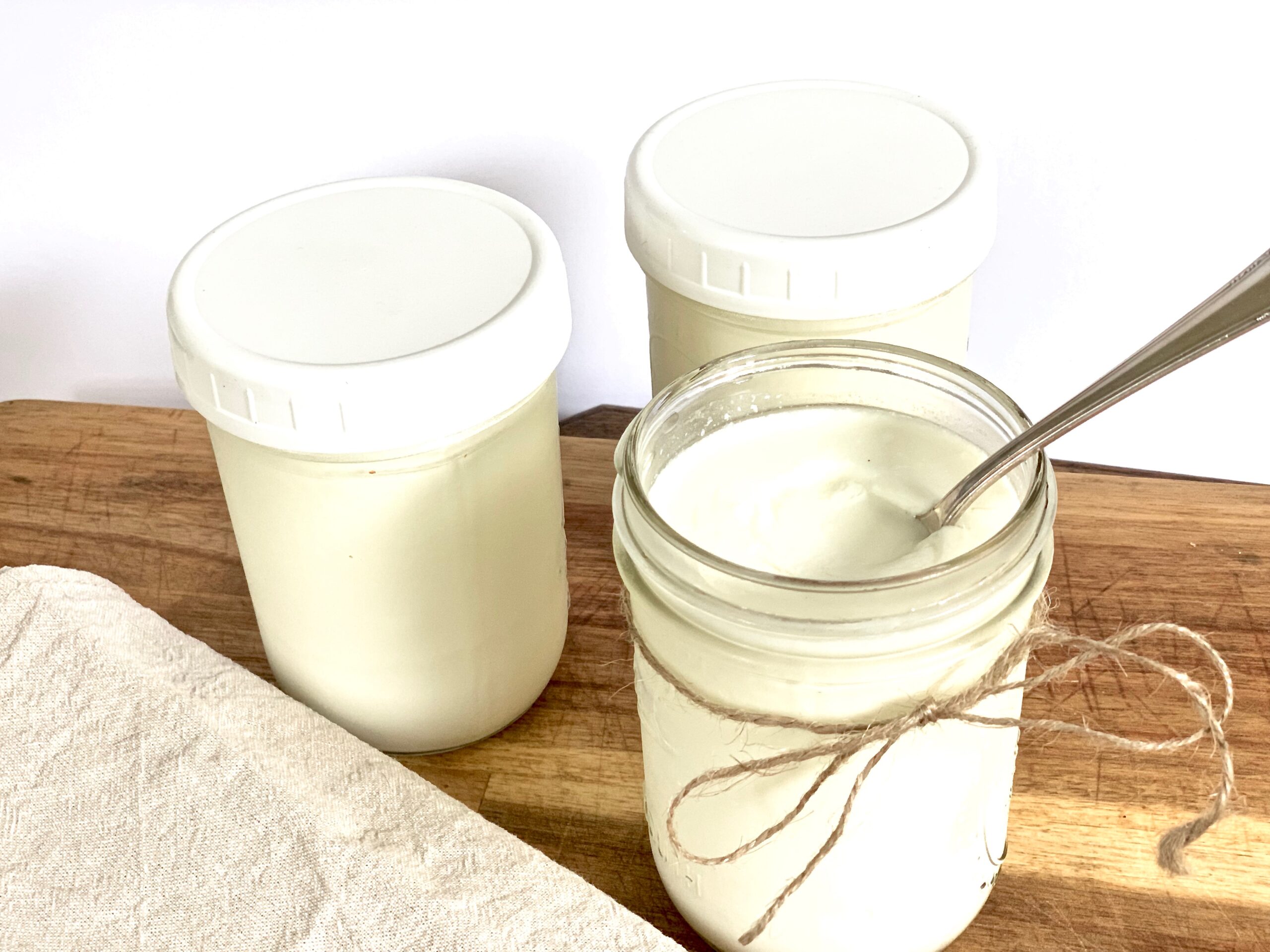
• I often like to eat yogurt plain — that has nothing added — by the side of my breakfast. You can also top your overnight oats or oatmeal with it!
• Yogurt is great in your favorite smoothie, giving it a little “tang”. Just replace your milk with yogurt.
• There are many recipes for yogurt-based salad dressings.
• In Indian cuisine, yogurt is often added as a dollop on top of their dish.
• Yogurt also is the base for lassis; they can both be savory or sweet.
3. Kefir
Kefir is similar to yogurt. Its taste is a bit more tart than yogurt. Fortunately, it is very easy to make your own. People who have kefir grains will be happy to share some with you as they multiply quickly.
Since kefir grains are very hungry, they typically need to be fed fresh milk every 24-48 hours. Even with smaller batches, I find that we end up with more kefir than we need. Therefore, I found a method of how you can slow down your kefir production all the while keeping your kefir grains happy and active.
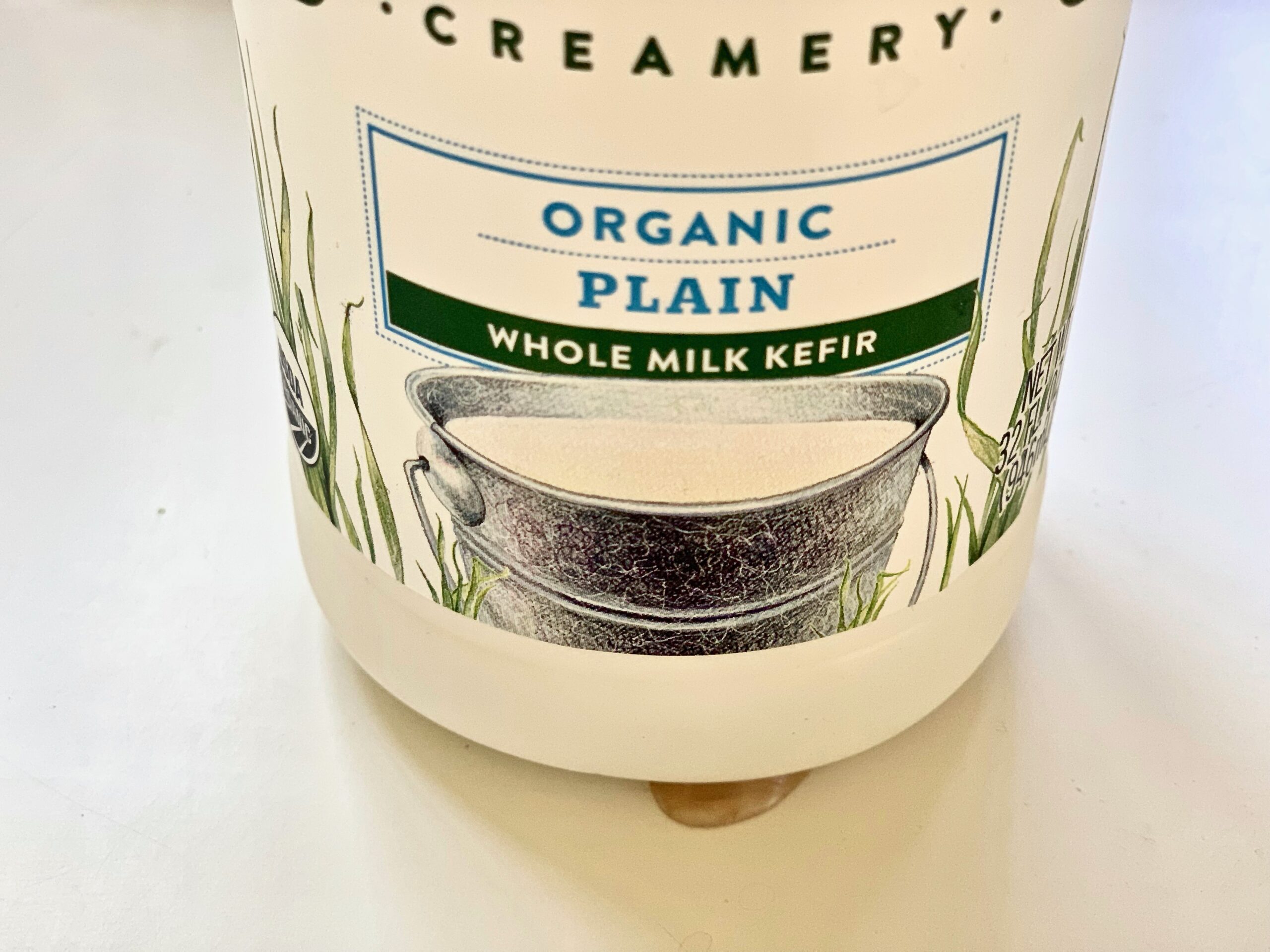
You can use kefir just like yogurt in:
• Smoothies or;
• Salad dressings
In addition to yogurt and kefir, you might like to add any other cultured dairy; for example, sour cream (with live cultures), cultured butter, and raw cheeses.
3. Miso
Miso is fermented rice, barley, or chickpeas. Look for it in the refrigerated section of your grocery store or Asian market.
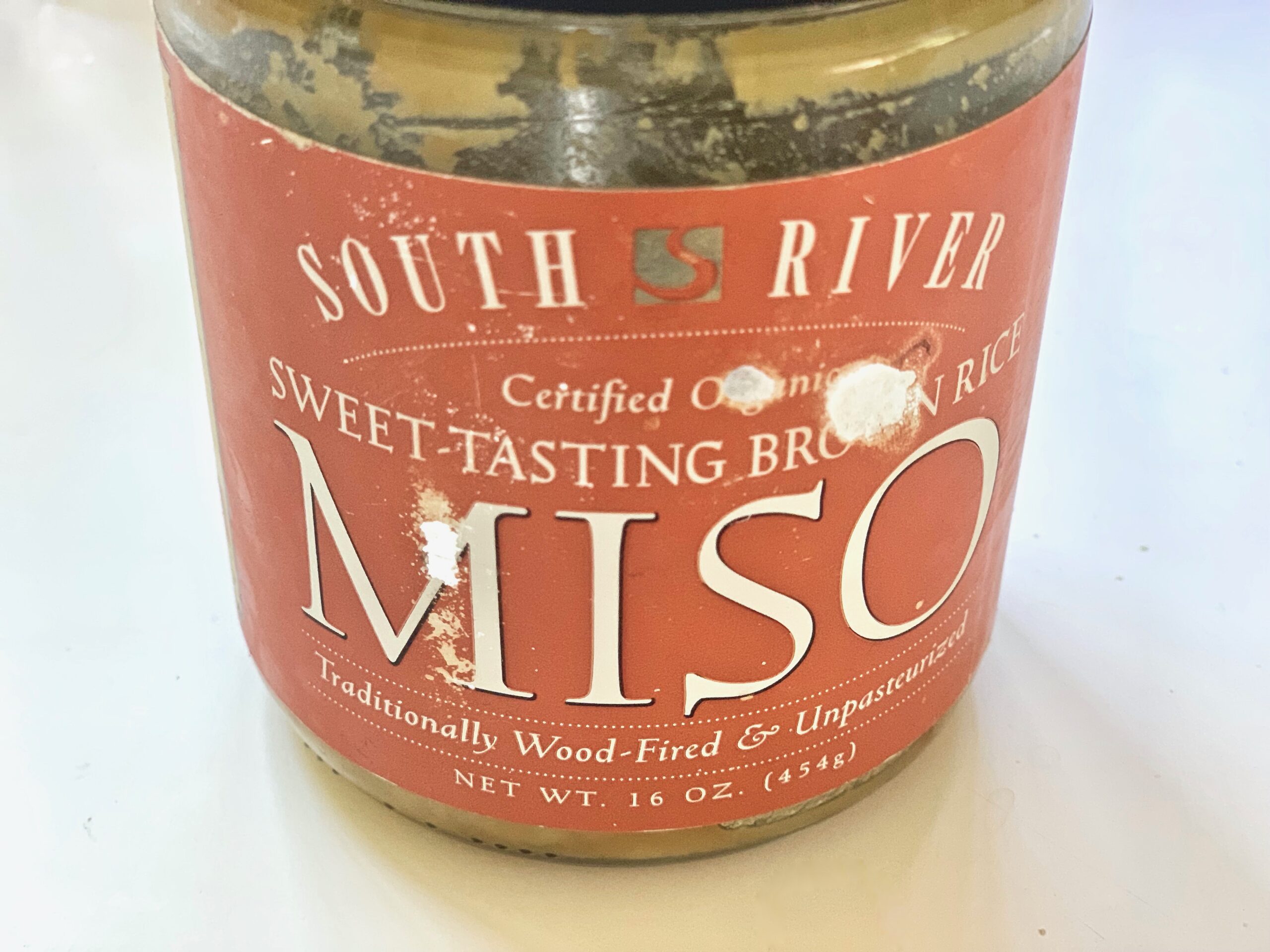
You can use miso in:
• Soups (miso soup) — just make sure you are NOT using boiling water, as that will destroy the live bacteria, but you can use hot water.
• Vegetable, meat, or grain soups instead or in addition to your salt or boullion
• Salad dressings — adding a bit of miso adds incredible depth of flavor. Just try it out!
• Miso tahini sauce, which is a delicious way to dress up any veggies and/or protein. Check out the recipe here.
4. Tempeh and Tofu
Tofu is made from fermented soy milk while tempeh is made from fermented soybeans (and sometimes grains).
These are delicious vegetarian sources of protein.
5. Sauerkraut
Sauerkraut is experiencing a big come-back — for very good reason! Our ancestors had figured out that by adding salt to cabbage and depriving it of oxygen (keeping it submerged), you can make it last past the harvest.
Just make sure you buy the raw sauerkraut you are finding in the refrigerated section. Sauerkraut from the shelves in jars or cans has been pasteurized.
Making sauerkraut is a simple process. Leaving your sauerkraut to ferment for about 5-6 days does increase the number of beneficial bacteria, though!
This fermented vegetable is very easy to make. If you’re interested, check out my detailed tutorial here.
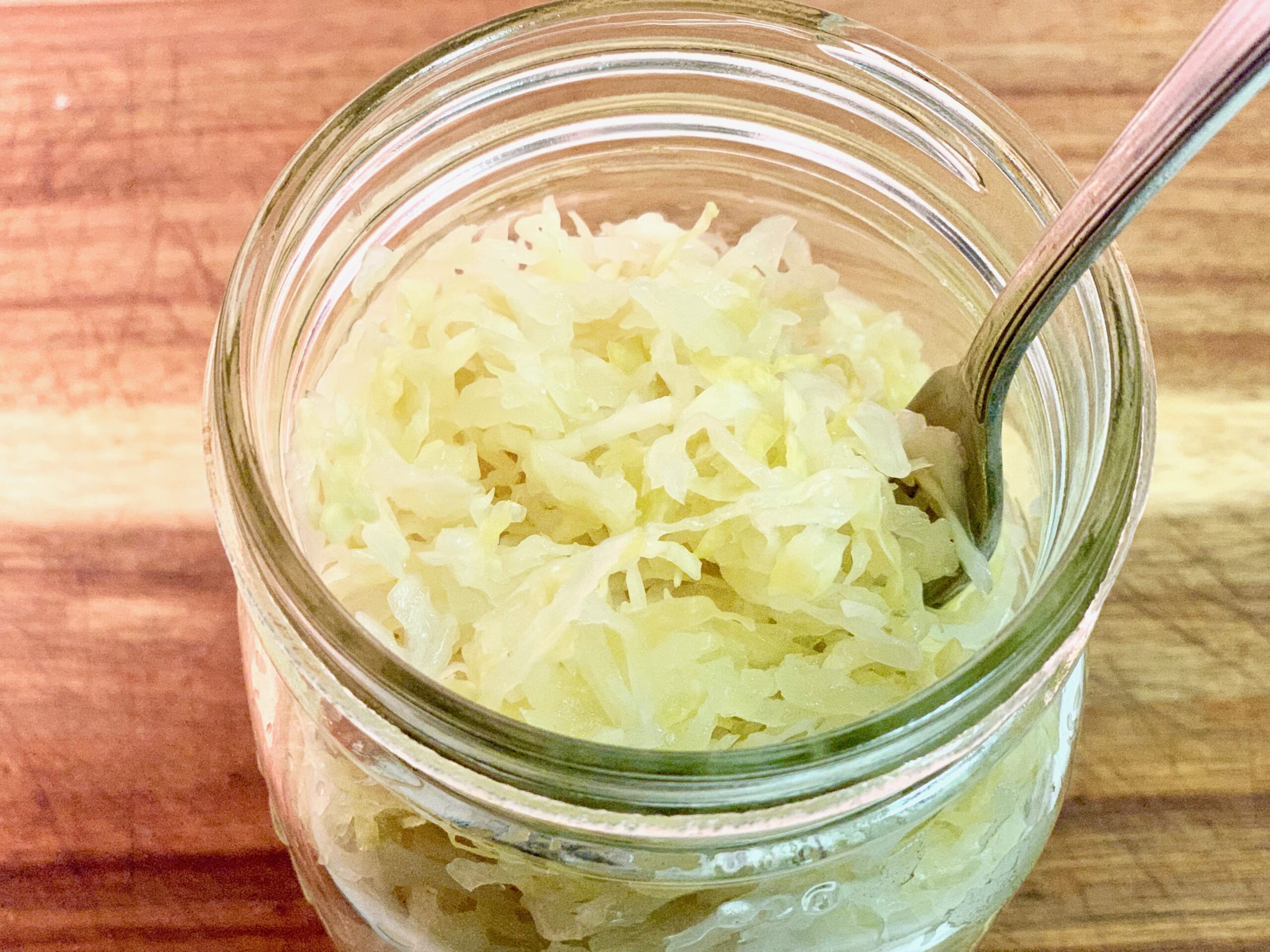
We like to eat sauerkraut:
• As a little dollop on our plate next to our food
• In sandwiches
• Sprinkled over salads
• Sprinkled over soups
6. Kombucha and Water Kefir
Although made differently, these drinks help add live cultures to your gut. There are many recipes online on how to make kombucha and water kefir. It’s definitely worth checking them out!
7. Olives
Yes, olives! They are full of live beneficial bacteria.
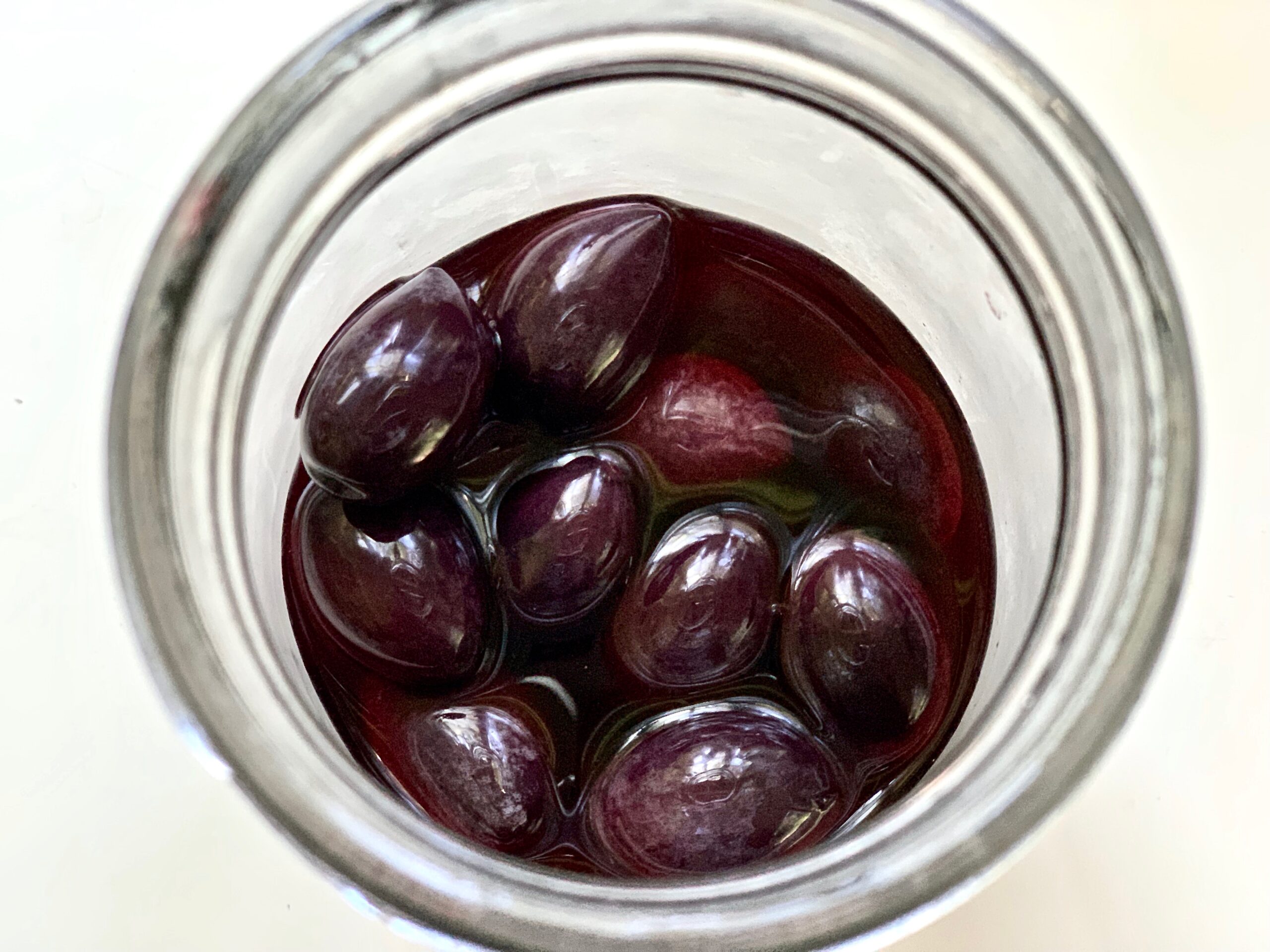
You can simply eat:
• A handful before your meals
• Slice and sprinkle them over your salads
• On top of your pizza
8. Sourdough Bread
Sourdough bread is already a healthy choice since the fermentation process makes the grains more digestible for your body.
However, if you’re baking your sourdough bread at 350˚F, it will reach that temperature on the outside. But not on the inside. That means that there will be live cultures still on the inside of the bread.
You can buy high-quality sourdough or better yet, make your own. You can click here to learn how I bake a delicious whole grain sourdough bread and a lighter, whiter Artisan-style sourdough bread.
With that, you can make open-faced sandwiches or eat it however you would eat any bread. Sometimes, I just prefer a slice of bread with some butter!
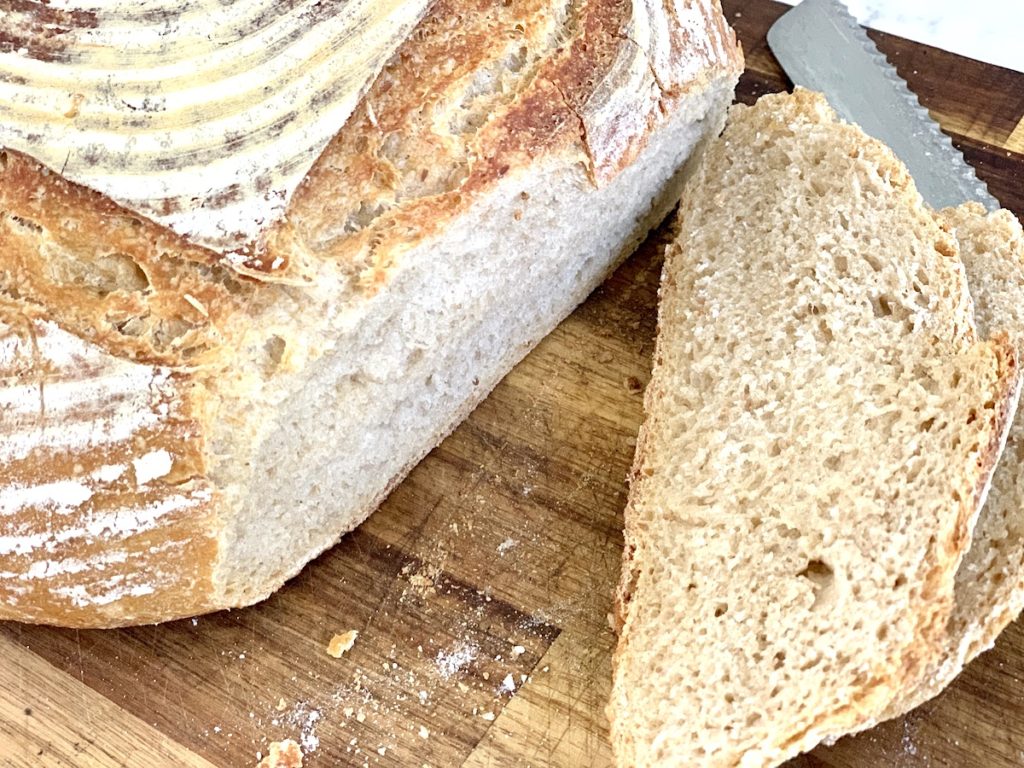
9. Chocolate
Now, who would have thought that you can add probiotics with chocolate? I call that a double-whammy 😉
Read here for more info.
You can feel good about eating 1 to 2 oz of dark chocolate. Make sure it’s as dark as possible. Lower cacao content just means higher sugar content. Also, dark chocolate is better than milk chocolate.
When to eat dark chocolate? Any time!
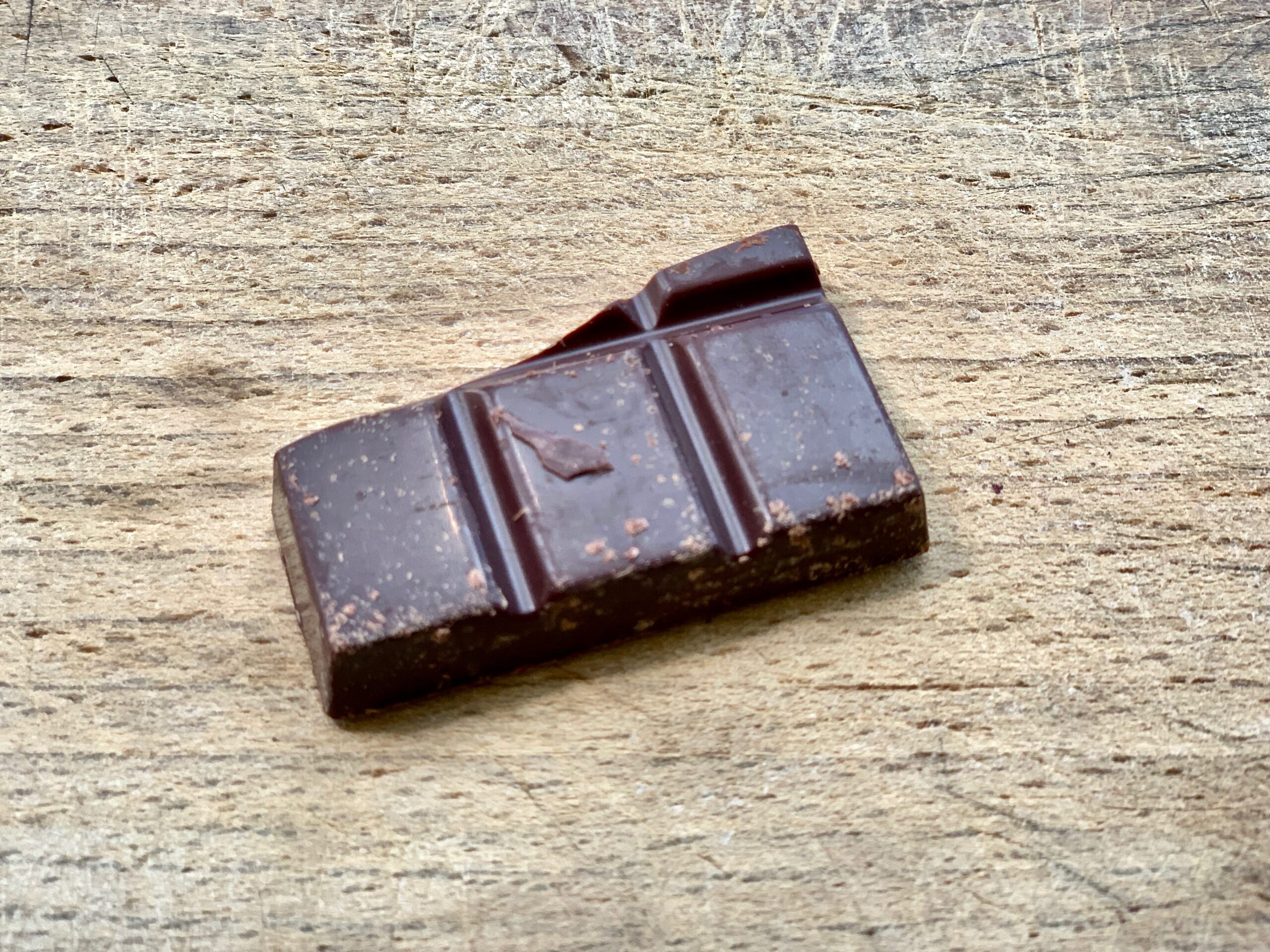
10. Supplements
I am just adding this to make my list go to 10. Seriously! Even though I much prefer adding probiotics with real foods, there are times when you just want to reach for that supplement.
Do your research to make sure that you are getting a high-quality product. Also, look for CFUs (colon-forming units) that survive the stomach acids.
To conclude, there are so many different ways how you can improve and maintain gut health both with whole foods and supplements.
Read more:
How to make your own sourdough starter
Homemade long-fermented sauerkraut
What are your favorite ways to include fermented foods? I would love to hear from you in the comments below!
Pin For Later:
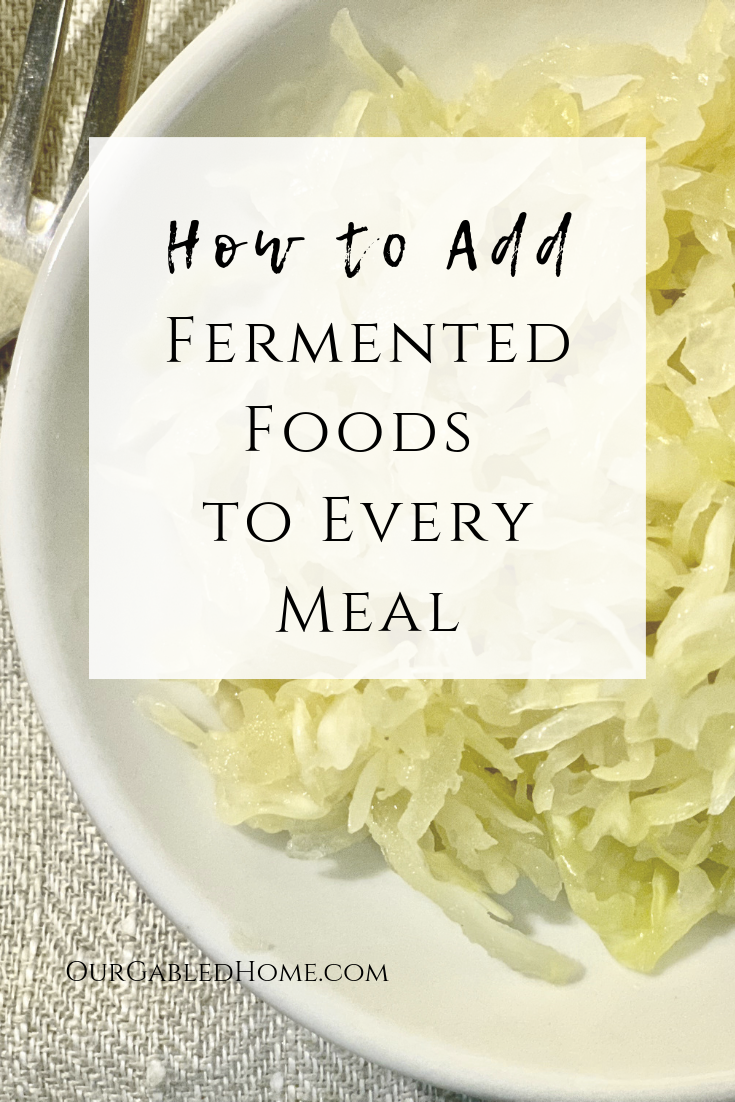


Hi Anja, Great information. Thanks. I’m also German, 87 yrs old. Going strong. And Boy, do I love my dark chocolate. It satisfies in so many ways.
I’m off to make my Sauerkraut Dinner. Are you familiar with Kohl und Pinkel? Another German cold weather dish. So many hearty dishes from our childhood. Will be a follower from here on. Thanks.
So happy to hear you’re happy and healthy! Of course, I am familiar with Grünkohl und Pinkel but the latter can be hard to impossible to find in the US. Thank you for your sweet comment ~ Anja
I have lived with colitis, IBS, now HFCS, for my whole life. I am 71 years old. I cant do this anymore. I think fermentation might be the way to go. Please help. Anything you can suggest would be great.
I am so sorry to hear that! While I am sure that adding fermented foods will help, you might need to consult a dietitian or functional medicine provider who can tailor a diet to your specific needs. Hope this helps!
Your post is so helpful and informative. Thanks for sharing your helpful post.
So glad you find this helpful and thank you for the nice comment <3 !!